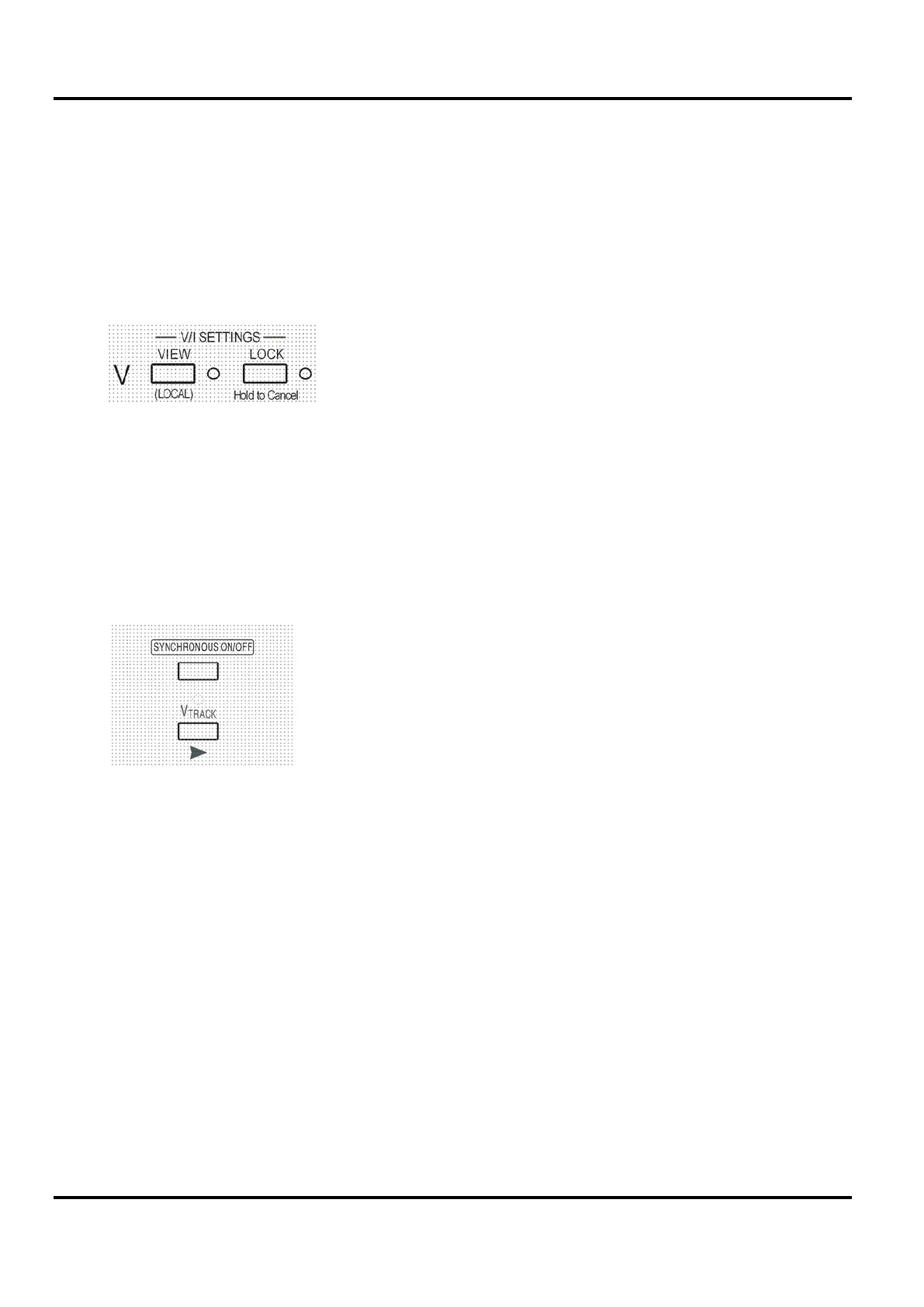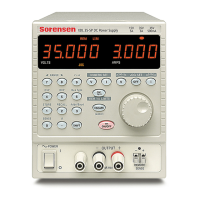16
TRACK
selects voltage tracking mode. The two outputs
remain electrically isolated but the Voltage controls of Output 1 (the
Master) set an identical voltage on Output 2 (the Slave).
The Current controls of Master and Slave remain independent.
The electrical isolation permits the two outputs to be connected to
provide, for example, tracking voltages of opposite polarity or identical
voltages connected to different system references (e.g. digital ground
and analogue ground).
Tracking is also useful when the outputs are connected in parallel.
Lock Settings
Pressing the LOCK key digitally locks the set voltage and current limit. The settings are stored
with a precision of better than 1 digit. Subsequent adjustments of the VOLTAGE and CURRENT
controls will have no effect.
Because cancelling LOCK will cause the output settings to change if the VOLTAGE and
CURRENT control positions have been moved, warning reminders are given before LOCK is
cancelled. Press and hold the key to cancel LOCK.
If the OUTPUT is off (the safe condition) the display will flash the ‘unlocked’ settings twice before
the change is implemented; the LOCK lamp goes off.
Releasing the LOCK key at any time while the display is flashing will abort the LOCK cancellation.
Attempting to select a different range with LOCK enabled is not allowed; if attempted, the
message Unloc is shown briefly in the display and the LOCK lamp is also flashed. If the output
is also on when these actions are attempted the message
turn oFF is first shown in the
display (accompanied by the output lamp flashing) followed by the message
Unloc (with the
LOCK lamp flashing).
The LOCK status at power on is the same as at last power off.
Voltage Tracking Mode
V
TRACK
can only be enabled or disabled with Output 2 (the Slave) off. If an attempt is made to set
V
TRACK
with the Slave output on, then the message turn oFF is shown in the display
(accompanied by the output lamp flashing). Selecting V
TRACK
automatically sets the range of
Output 2 to 60V/20A; when V
TRACK
is cancelled the Output 2 range reverts to that set before
V
TRACK
was selected.
The LOCK function of the Master operates exactly as described previously and, because the
output voltage of the Slave tracks the Master, it controls the Slave output voltage as well. Note
that only the output voltage of the Slave is ‘locked’ when the Master LOCK is used; the current
controls of the Slave remain independent.
The LOCK key on the Slave output is ignored and pressing it causes the message
In trac
to be shown momentarily in the Slave display as a reminder.
It is possible to switch from V
TRACK
back to Independent with LOCK still set on the Master. The
Master settings stay ’locked’ but the settings of the Slave are not locked.
The V
TRACK
status at power on is the same as at last power off.
If the output is still on, OP on (output on) will flash twice in the
display, followed by flashing of the new ‘unlocked’ settings for 2-3
seconds (slowly at first, then faster) before the change is finally
implemented; the LOCK lamp goes off when the change is made.

